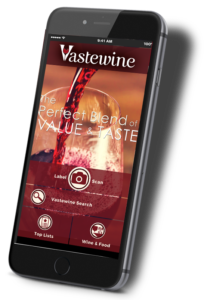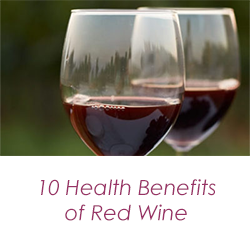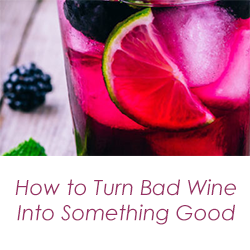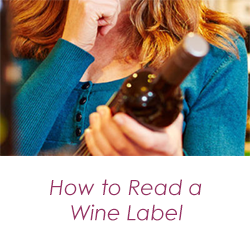How to Tell if Your Wine is Cooked or Corked
– I Feel Like A Dork When It Comes To The Cork
 I know you have been there. Entertaining a large group of people at your house, all standing in the kitchen watching you as you open the fine bottle of wine you have been bragging about for weeks. The excitement builds. You insert the wine opener and start twisting. There is a warmth of happiness and joy filling your body as everyone waits in excited anticipation. Then bam! The cork crumbles into a thousand tiny pieces and floats in the wine like an S.O.S. note in a tiny bottle that made its way across the Atlantic Ocean. Nooooo!
I know you have been there. Entertaining a large group of people at your house, all standing in the kitchen watching you as you open the fine bottle of wine you have been bragging about for weeks. The excitement builds. You insert the wine opener and start twisting. There is a warmth of happiness and joy filling your body as everyone waits in excited anticipation. Then bam! The cork crumbles into a thousand tiny pieces and floats in the wine like an S.O.S. note in a tiny bottle that made its way across the Atlantic Ocean. Nooooo!
Believe it or not, you are not alone. This happens to many of us at one point or another. However, this is not the most telling sign that the cork is bad. There are actually 2 factors that should make you return the wine back to the store. If your wine is “corked”, meaning that the cork itself was defective, then you will know immediately. Also, there is a chance that your wine may be “cooked”, also calling for a quick drive back to the store for an exchange.
What is Corked?
I know what you are thinking. “All wines have corks, right? Isn’t that what corked means?” Yeah, that would make too much sense. So what does a wine being “corked” actually entail? It is the number one problem people encounter when buying wine. In the most basic of terms, it means that the cork itself is defective, therefore causing the wine to be bad.
Oh, you want more information? Fine. Corking bottles is a traditional practice that began at the same time that glass bottles became popular, and it has been around for thousands of years. The corks seal the wine that slows down the oxidation process, allowing the wine to age slowly. Good, quality corks allow a minimal amount of oxygen into the wine. When air interacts with wine, oxidation eventually takes place. So, optimally, a minimum amount of air is best for wines to reach their maturity and allow the most important qualities to shine. Ideally, the best corks allow 1 milligram of oxygen per year into the bottle. This is just the right amount to remove the sulfites that were added during the bottling process to keep the wine fresh. The corks themselves are produced from cork oak trees, which are primarily grown in Portugal. Do you have any idea how much science and geography I just taught you in this one paragraph?
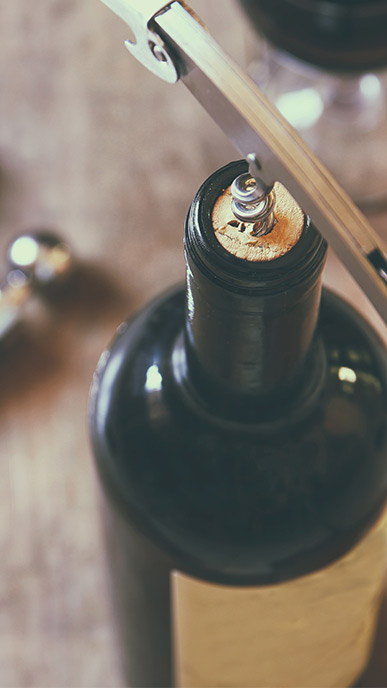
So how exactly are corks made? Well, the process usually takes more than 3 months. First, depending on the manufacturer, the tree is stripped of the cork material. If it meets the standards of that particular producer, they dry it out for 3 months. This allows time for the cork itself to develop the right amount of elasticity. What happens next is when the problems can occur. They boil the cork in water for about 2 hours, allowing the cork to be flattened for later formation. What worries me is that some of you are out there stripping trees in your yard and boiling them. Stop it! Just keep reading. Anyway, the next step is where the contamination can occur. After shaping, sizing, and polishing the cork, they then disinfect it in chlorine or hydrogen peroxide. This is where TCA infection can occur.
TCA, short for 2,4,6 Trichloroanisole, is a type of fungus that occurs naturally. If the producer uses chlorine during the process, the chances of TCA developing are higher. While the corks are being bleached and sterilized, this incredibly potent fungus creeps in. Just imagine, a single drop of TCA can do damage to more than 100 humongous swimming pools! A full teaspoon would completely destroy an entire lake! Hmm, I wonder if a water bottle full would wipe out earth? Huh. Interesting. So back to business. Since TCA is a naturally occurring process, it is impossible to remove it entirely. However, efforts to remove this devastating fungus have improved greatly over the years, causing the number of tainted corks to reduce drastically.
It is important to note that not everyone has the same senses when it comes to detecting TCA in their wine. You could be at a dinner party or wine tasting, and some will claim that the bottle has been “corked”, or affected with TCA, while others don’t detect it at all. There are also current studies that show TCA is not actually the cause of a wine being infected or damaged, and that instead it is actually changing the way the wine taster experiences the wine with their different senses.
What is Cooked?
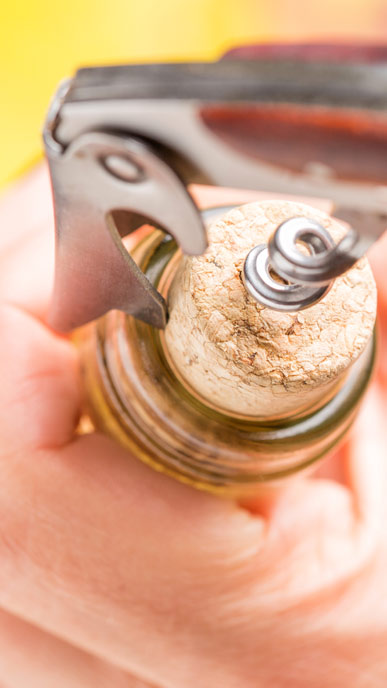
Ok, so this one is a little bit easier to wrap your brain around. Ever leave a Watermelon in the oven too long and it burns? Just me? Hello, anybody there? Fine, not the best example. Cooked wines are just what it sounds like. These are wines that have been exposed to high heat or crazy temperature spikes. Even short term exposure to heat over 80 degrees Fahrenheit can damage your wine. Even higher than that, the chances your wine is going to be yucky is pretty high. Obviously, don’t cook the wine in the oven with your watermelon.
So how can you tell if a bottle of wine has been cooked before you even open it, you ask? Crazy how I can read your mind, huh? There are certain factors to look for. First, is the cork protruding from the top of the bottle, even slightly? If so, this could easily be caused by high temperature spikes or even freezing temperatures. Also, is there evidence of the wine seeping out on to the bottle? Do you see wine residue around the neck or on the side of the cork? If so, yeah, there is a strong chance your wine is cooked. Lastly, is there watermelon juice or seeds stuck to the side of the bottle? If you answered yes to this one, then you should probably not listen to me anymore. Don’t cook your watermelons.
Can I Drink Cooked Or Corked Wine?
Physically, drinking a cooked or corked wine is not going to do any damage. Mentally, you might cry for days and binge watch the Lifetime channel while eating popcorn and mumbling “why oh why did this happen to me?” over and over. Ok, that’s a little extreme. You might not even like popcorn. Anyway, if you drink a cooked wine, for example, the fruits may be bright and show signs of being crispy. You will probably also notice a very short finish to it’s previously wonderful aromas and tastes. In some cases of extreme cooking, the wine will just be flat and dull. So, yes you can drink these, but I would highly recommend not to as to avoid any emotional breakdowns.
With corked wines, the level of TCA present will depend on how miserable the wine drinking experience will be. If the levels are high, and the wine is severely corked, then you are going to not only experience a horrible stench that won’t go away, you will also taste basically nothing but flatness. In a mildly corked wine, which is sometimes difficult to detect, the aromas and tastes will just seem to be off. Many times, only a professional taster will be able to tell the difference from a slightly corked wine and one that is normal.

What Do I Do If I Buy A Cooked Or Corked Wine?
If you happen to be unlucky enough to buy a bottle that is cooked or corked, don’t worry. You have options. First, you could save the bottle for when you are entertaining a party of people you don’t like. Give them all the tainted wine and pour yourself the good stuff. Then just keep raving about how good the wine is, and tell them they don’t know what they are doing when they spit theirs out.
Or, if you are not the vindictive type, just return it to the store or winery you purchased it from. If a wine is corked, then that means the bottle was ruined from day one, and it is the responsibility of who you bought if from to replace it. If the wine was cooked, that means it was exposed to extreme temperatures, and once again it is the responsibility of who sold you the wine. This is the case with all younger wines. However, if it is an older vintage that is not easily replaceable, you might be out of luck and need to stick with the vindictive dinner party scenario.
Luckily!
Luckily, there are a lot of advances and techniques being used in the vino world today to prevent cooking and corking. Screwtops are making a huge splash, especially in Australia. Also, many wine makers are using different techniques such as bleaching the corks with peroxide or boiling them in clean water. The most technically advanced method, and most expensive, is carbon dioxide washing.
As you can see, the wine community worldwide is trying their best to make sure the chances that we buy a cooked or corked bottle is minimal. There is a good chance that it will happen to you somewhere down the road, but at least now you have a better idea how to spot it before you purchase. And if you do happen to accidentally buy that terrible bottle and open it, you now know what to do next. Vindictive dinner par…. I mean, return it.
Sign Up to be a Tasting Partner!
Enter your email below and you will be the first to know about new wines, recipes, wine articles, and new additions to the Vastewine app.
